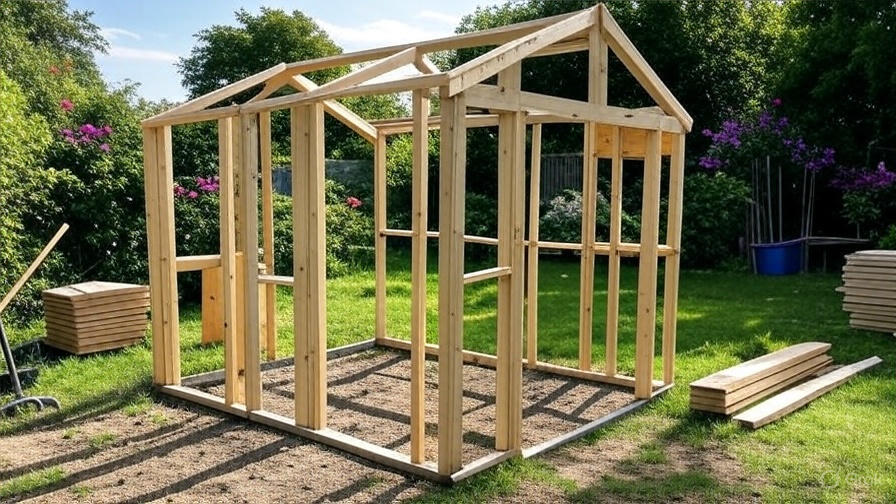A garden shed can be much more than just a storage unit — it can be a workshop, a potting area, or even a peaceful retreat tucked away in your backyard. Whether you’re building it yourself or buying a pre-made kit, one thing is non-negotiable: using the right timber.
In the UK, where weather is often unpredictable, choosing the correct type of timber is essential for durability, strength, and value. In this guide, we’ll walk you through everything you need to know about selecting the best wood for your garden shed project.
Why Timber Selection Matters for Sheds
Your shed is exposed to a lot — rain, frost, wind, heat, and humidity. Choosing low-grade or untreated timber can lead to problems like:
- Rot and mould
- Warping or splitting
- Pest infestation
- Reduced structural strength
That’s why investing a little time in understanding your timber options can save you headaches (and money) down the line.
Types of Timber Commonly Used for Garden Sheds
Not all wood is created equal. Let’s break down the most commonly used types of timber in the UK for shed building:
1. Treated Softwood (Pine or Spruce)
This is the go-to material for most garden sheds. It’s affordable, easy to work with, and — when pressure treated — highly durable. The pressure treatment process forces preservatives deep into the wood, making it resistant to rot, fungus, and insects.
Best for: Framework, cladding, floor joists, and roof structures.
2. Redwood
Redwood is a higher-quality softwood often used in premium garden sheds. It has tighter grain and fewer knots than pine or spruce, offering better stability and a more polished look.
Best for: Exterior cladding and visible parts of the shed.
3. Hardwood (e.g., Oak)
Hardwood is naturally more durable and long-lasting than softwood, but it comes at a higher price. While not commonly used in most shed builds due to cost, it’s excellent for custom, high-end builds.
Best for: Decorative features, doors, and framing in bespoke sheds.
Treated vs Untreated Timber
This decision is critical. While untreated wood may be cheaper upfront, it’s not designed to withstand moisture or insects, which makes it a poor choice for anything outdoors.
Treated Timber Benefits:
- Longer lifespan (up to 15–20 years)
- Lower maintenance
- Resistant to rot and pests
- Better structural integrity
If you’re doing any structural work — like base framing or roof support — always opt for treated timber. It may cost slightly more, but it pays off in long-term performance.
What Timber to Use for Each Shed Part
To keep things simple, here’s how to match timber types to each section of your shed build:
Base & Floor:
Use treated timber joists or pressure-treated bearers. These need to support weight and withstand ground-level moisture. Always raise the base slightly off the ground for airflow.
Walls & Framework:
Go with treated softwood studs — they’re strong, affordable, and easy to cut. Ensure the wood is straight and knot-free where possible.
Doors:
Doors require stable wood that resists warping. Use hardwood for high-end finishes or treated redwood for better durability and appearance.
Roof Supports:
Use treated structural timber or roofing battens, depending on the size of the shed. Make sure to follow roof load guidelines, especially in snowy areas.
Cladding:
This is the outer layer, and aesthetics matter here. Use tongue and groove redwood cladding for a smooth, modern finish, or go with overlapping feather edge boards for a rustic look.
Shed Timber Sizes to Know
Standard timber dimensions used in UK shed construction:
- 38mm x 63mm or 38mm x 89mm for wall studs
- 47mm x 100mm or 47mm x 125mm for floor and roof joists
- 12mm – 20mm thickness for cladding, depending on style
Always check building plans or kit requirements before ordering timber, and buy a bit extra to account for cutting errors.
Sustainable Timber: A Smart Choice
In today’s eco-conscious market, it’s a good idea to choose FSC-certified timber, meaning it’s sourced from responsibly managed forests. Not only is this better for the planet, but it also ensures you’re getting wood that meets UK quality and environmental standards.
You can also find reclaimed timber, which gives your shed a unique character and keeps usable materials out of landfill.
Tips for Maintaining Timber Sheds
Even with treated timber, a little maintenance goes a long way. Here’s how to keep your shed looking good and standing strong:
- Seal exposed cuts: If you cut treated timber, seal the ends with a wood preservative.
- Stain or paint annually: Use a UV-resistant wood stain to protect colour and surface.
- Check for moisture: Make sure the base stays dry and ventilated to prevent rot.
- Inspect regularly: Look for loose boards, pest signs, or weather damage after storms.
DIY or Kit: Which Is Better?
You can buy timber shed kits from many UK suppliers, or go fully DIY if you’re confident with tools. Kits offer convenience and typically include all necessary timber pre-cut and treated. A custom DIY build offers flexibility in size, layout, and material quality — but it does take more planning.
Final Thoughts
If you’re planning a garden shed, the timber you choose will directly affect how long it lasts, how it looks, and how much maintenance it needs. In the UK, where weather can be harsh and unpredictable, opting for high-quality treated timber is the smartest move you can make.
From cladding to joists, selecting the right wood for each component ensures your garden shed will stand the test of time — and stay looking sharp in your outdoor space for years to come.
Share this content:


